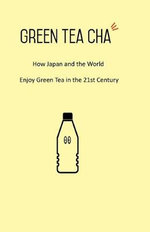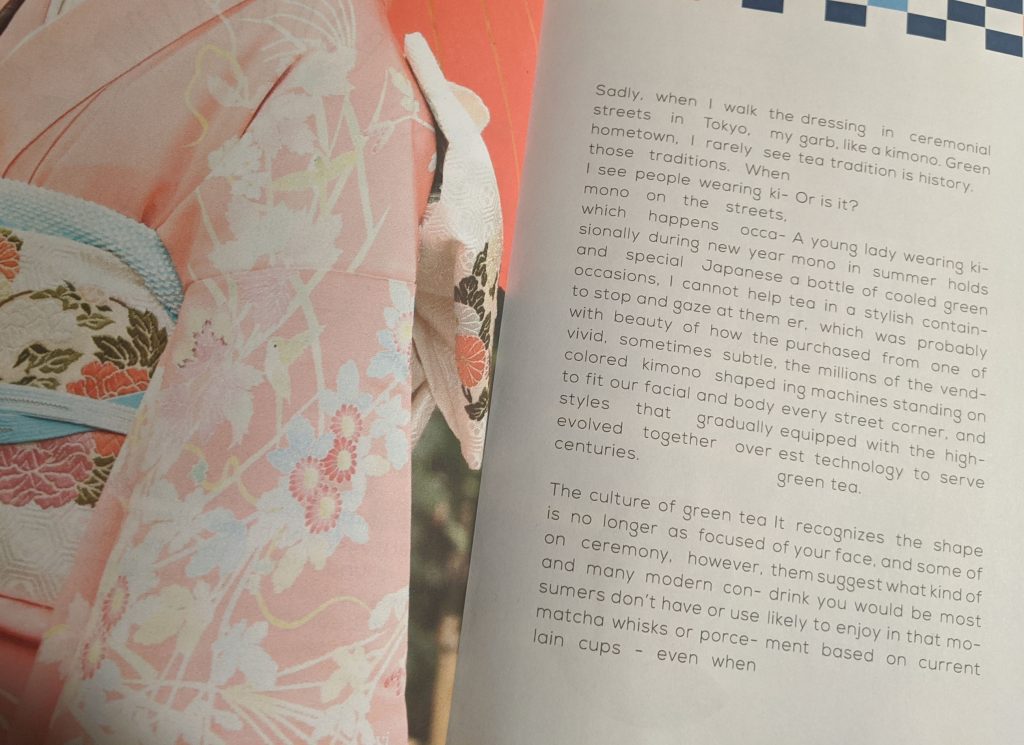
‘How Japan and the World Enjoy Green Tea in the 21st Century’
I really wanted to like this book because the style of it is accessible and the layout is very colourful. It breezes through with several short chapters named alluring things like ‘The Unexpected Place Where Matcha is King’, and features lots of pictures of fun green tea products… but it really doesn’t step up from being a bunch of blog posts put into a book format.
It’s fair to say I have some issues with it. One of which is the font that’s used. I know that’s a little bit picky, but it’s too wide for the columns and so a lot of words are hyphenated and some of the columns are too close together. Generally speaking, the text doesn’t always line up in the most coherent way, which makes it difficult to read and this is incredibly distracting.

The best thing about it is it does give an overview of some of the novelty tea stuff that comes out of Japan such as the origins of the matcha Kit-Kat, and a whole bunch of alcoholic drinks such as green tea beer, which have taken Japan (and the world) by storm.
It also spends quite a bit of space detailing the history and context around vending machines in Japan and the subsequent rise of vending machine tea drinks, which I found quite interesting and that genuinely enlighten the reader as to why and how tea consumption has shifted and is shifting.
The segment on tea and food pairing is also helpful, at least as a start if you intend on taking culinary matching further.
The book’s biggest weakness is that it’s superficial. It reads like somebody who’s going around saying ‘here’s a green tea thing that exists’ without actually discussing in any depth about how it came to be (except the vending machine part!) or providing any insight into its place in a wider trend. A lot of the material basically reads ‘a green tea thing that exists! it’s part of a trend!’. It just hits you over the head chapter after chapter with that.
It also contains some recipes for green tea drinks (smoothies and cocktails). I’m sure I’m not alone when I say I feel ripped off when books that are not recipe books contain recipes – there’s really nothing of value if you don’t intend on making these concoctions, but even if you did maybe you’d just look it up online with ingredients you can access. (Maybe it’s just me that feels this way but recipes take up 39 pages of a 143-page book…).
If I had bought this as a $10 zine, it would have been a different story, I think. I would’ve forgiven the layout issues and the typos and the underlined parts that I suppose were originally links to more detailed information. However, I paid like AU$33 for it thinking it was a book with an ethnographic bent and I’m disappointed it really doesn’t step up from being a nicely produced zine.
Good try, but not really worth the money.
Green Tea Cha by Kei Nishida (2017)